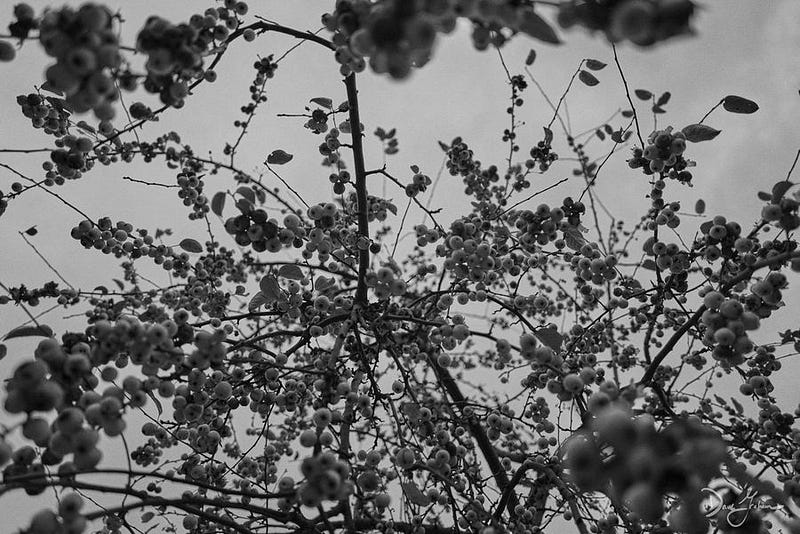Looking without Seeing

How often do you take the time to lay on your back and look up? I don’t mean “look up” in the sense of “Oh, the clouds are coming in” or “The sun is burning my retinas.” I mean really looking up.
In life’s chaotic busyness, we’re inclined to glance, to permit ourselves a few seconds of indirect view, before coming back to the task in front of you. We’re given to flirtateous moments with the world at large before being challenged to return our gazes to other, more important things.
If there’s one thing that has been made clear to me over the past four decades, it’s that we take our sight for granted.
We are sensory beings, relying on our faculties to incorporate the various stimuli in and around us into a single narrative of collective impulses. Our sense of smell is connected to our taste and our sight informs the expectation of texture. Our touch constructs the realities of our surroundings and our hearing becomes our radar and beacon. The marvel of all these interconnected senses is in both the stories they weave together and in their ability to compensate when one or another is unavailable or perhaps minimized.

Just by looking at this picture above, you begin to automatically tell a story, don’t you? You begin to describe the wood grain, the inclusions and knots, the rot and the aging of time herself against the weathered surface. You incorporate your senses together as well as the memories of similar things: boardwalks, sidewalks, the walls of your treehouse from when you were a kid, the ancient walls of the Victorian houses from your community, etc.
This story becomes important to you in the moment because it’s an opportunity to fixate on something that’s beyond your present circumstance. You enjoin a personal history to another’s experience and “see” something that resonates with your soul. You find it in the pictures as much as you find it in the words written alongside.
By way of these paragraphs, long as they may be, I’m hoping to drive home a point: That we see without truly looking, we experience without truly living.
So, ask the question again: when was the last time you truly looked up? I’m going to humbly suggest that it’s been a long time for each of us. Long enough that we’ve forgotten what it is to pause and appreciate the world around us, long enough to forget how to weave together Nature and Humanity’s story of collision. We pay obeisance to what is required of us: our screens, our conversations over social media, etc. but this is required and scarcely holds our attention. But we fall quickly away from the rewards of interconnectedness, of seeing the threads that connect us together.
My dear souls, as winter encroaches with its blankets of snow and ice, we’re faced with an opportunity to reset, to reconfigure, to reengage with our senses. I’d suggest that we take these months of darkness and light, cold and warmth, and re-learn what it is to “see.” Sit by a fire and close your eyes.
Listen to the sharp cracks of steam exploding from damp wood, listen to the shift in the pile as logs turn to ash, smell the smoke that tickles the corners of your nose, taste the acrid interplay of it on your tongue, and feel the heat as it dances on your skin.
Close off each one of your senses and re-imagine the stories they tell. One by one, learn what it is to see, to feel, to touch, to smell, to taste…to experience life in all of its manifold parts. Use this to soften your approach to living, to embrace the differences in all of us, for we’re all telling stories from our different senses. Perhaps then, and only then, we’ll find ourselves better equipped to embrace the humanity around us all.
May it ever be so.





